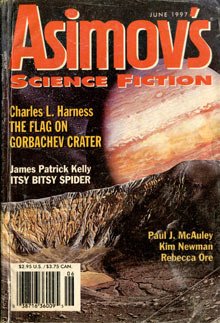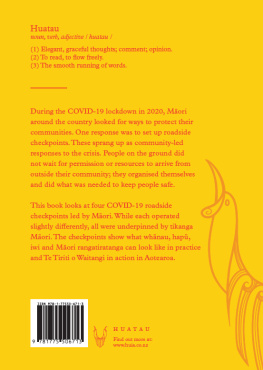PREFACE
Table of Contents
Last summer the Trustees of the Hispanic Society of America did me the honour to invite me to give a course of lectures on Spanish literature in the United States, and almost at the same time an invitation to lecture on the same subject reached me from the Provost of University College, London. The chapters contained in the present volume are the result. The lectures on the Cid, Cervantes, Lope de Vega, Caldern, and Modern Spanish Novelists were delivered during the autumn and winter of 1907 at the University of Columbia; some of these were repeated at Cornell, Harvard, Johns Hopkins, Pennsylvania, and Yale Universities; some at Bryn Mawr, Mount Holyoke, and Smiths College (Northampton, Massachusetts); and the whole series was given this spring at University College, London.
Owing to the limited amount of time available for each lecture, it became necessary to omit a few paragraphs here and there in delivery. These are now restored. With the exception of the chapter on the Archpriest of Hita (part of which has been recast), all the lectures are printed substantially as they were written. Occasional references have been added in the form of notes.
In addresses of this kind some repetition of you and I is almost unavoidable. It has, however, been thought better to retain the conversational character of the lectures, and it is hoped that the use of the objectionable first personal pronoun does not degenerate into abuse.
Lastly, it is a duty and pleasure to thank my friendly audiences in America and England for the indulgence with which they listened to these discourses.
JAMES FITZMAURICE-KELLY.
Kneippbaden : vid Norrkping ,
xxxxxxxxx May 1, 1908.
CHAPTER I
THE CID
Table of Contents
Just as a portrait discloses the artists opinion of his sitter, so the choice of a hero is an involuntary piece of self-revelation. As man fashions his idols in his own image, we are in a fair way to understand him, if we know what he admires: and, as it is with individual units, so is it with races. National heroes symbolise the ambitions, the foibles, the general temper and radical qualities of those who have set them up as exemplars. But there are two sides to every character, and Spain has two national heroes known all the world over: the practical Cid and the idealistic Don Quixote, one of them an historical figure, and the other the child of a great mans fancy. Perhaps to the majority of mankind the offspring of Cervantess poetic imagination is more vividly present than the authentic warrior who headed many a desperate charge. It is the singular privilege of genius to substitute its own intense conceptions for the unromantic facts, and to create out of nothing beings that seem more vital than men of flesh and blood. Don Quixote has become a part of the visible universe, while most of us behold the Cid, not as he really was, but as Corneille portrayed him more than five centuries after his death. It may not be amiss to bring him back to earth by recalling the ascertainable incidents in his adventurous career.
So marked are the differences between the Cid of history and the Cid of legend that, early in the nineteenth century his very existence was called in question by the sceptical Jesuit Masdeu, an historian who delighted in paradox. Masdeus doubts were reiterated by Samuel Dunham in his History of Spain and Portugal, and by Dunhams translator, Antonio Mara de Alcal Galiano, a writer of repute in his own day. Alcal Galianos incredulity caused him some personal inconvenience, foras his kinsman, the celebrated novelist Juan Valera, recordshe was threatened with an action at law by a Spanish gentleman who piqued himself on his descent from the Cid, and was not disposed to see his alleged ancestor put aside as a fabulous creature like the Phnix. These negations, more or less sophistical, are the follies of the learned, and they have their match in the assertions of another school that sought to reconcile divergent views by assuming the existence of two Cids, each with a wife called Jimena, and each with a war-horse called Babieca. This generous process of duplicating everybody and everything has not found favour. Cervantes expresses his view through the canon in Don Quixote:That there was a Cid, as well as a Bernardo del Carpio, is beyond doubt; but that they did the deeds which they are said to have done, I take to be very doubtful. Few of us would care to be so affirmative as the canon with respect to Bernardo del Carpio, but he is perfectly right as regards the Cid.
It is certain that the Cid existed in the flesh. He was the son of Diego Lainez, a soldier who fought in the Navarrese campaign. Prez de Guzmn, in the Loores de los claros varones de Espaa, says that the Cid was born at Ro de Ovierna:
Este varn tan notable
en Ro de Ovierna nasci.
But the usual version is that the Cid was born at Bivar near Burgos, about the year 1040, and thence took his territorial designation. To contemporaries he was first of all known simply as Rodrigo (or Ruy) Daz de BivarRoderick, son of James, of Bivar; and later, from his prowess in single combat, as the Campeador (the Champion or Challenger). What was probably his earliest feat of this kind, the overthrow of a Navarrese knight, is recorded in a copy of rudely rhymed Latin verses, apparently the most ancient of the poems which were to commemorate the Cids exploits:
Eia! laetando, populi catervae,
Campi-doctoris hoc carmen audite!
Magis qui eius freti estis ope,
Cuncti venite!
Nobiliori de genere ortus,
Quod in Castella non est illo maius:
Hispalis novit et Iberum litus
Quis Rodericus.
Hoc fuit primum singulare bellum,
Cum adolescens devicit Navarrum:
Hinc Campi-doctor dictus est maiorum
Ore virorum.
The epithet gained at this early period clung to him through life: it is applied to him even by his enemies. It is curious to find that the Arab chroniclers constantly speak of him as Al-kambeyator, but never as the Cida word which is usually said to derive from the Arabic Sidi (= My Lord). This circumstance makes it doubtful whether he was widely known as the Cid during his own lifetime. There is, indeed, a pleasing legend to the effect that the King of Castile, on hearing Ruy Daz de Bivar addressed as Sidi by Arab prisoners of war, decreed that the successful soldier should henceforth be known by that name. But there is no evidence to support this story, and it is rather too picturesque to be plausible. It seems more likely that Ruy Daz de Bivar was first addressed as Sidi by Arabs who served under him or by the Arab population of Valencia which he conquered towards the end of his career, that the phrase was taken up by his Christian troops, and that it was not generally current among Spaniards till after his death. That he soon afterwards became widely known as the Cid or my Cid is apparent from a line in the rhymed Latin chronicle of the siege of Almera, written some fifty years later:
Ipse Rodericus, mio Cid semper vocatus.











